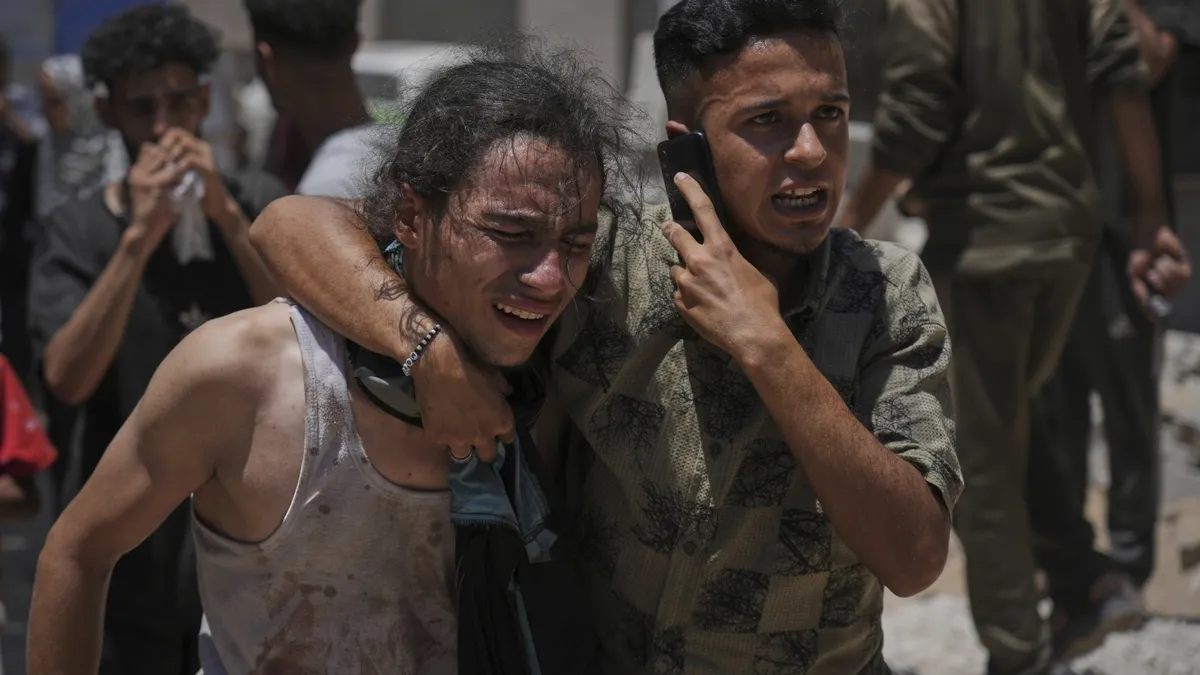
On Sunday, a devastating incident unfolded in Gaza as more than 94 Palestinians lost their lives due to gunfire from the Israeli military while attempting to obtain food aid. Local health authorities and hospital morgue officials reported that this day marked one of the deadliest in recent months for individuals seeking assistance. The most catastrophic event occurred in northern Gaza, near the Israeli border area of Zikim, where at least 81 Palestinians were killed while trying to access sacks of flour from U.N. World Food Programme trucks entering Gaza from Israel.
The Palestinian Red Crescent indicated that Israeli military forces specifically targeted civilians who were waiting for humanitarian aid north of Beit Lahia. Reports from a field hospital operated by the organization in Gaza City revealed that they received 95 injured individuals, with several in critical condition. In response to the escalating situation, the Israel Defense Forces (IDF) stated that their troops encountered thousands of Palestinians gathered in northern Gaza and fired warning shots to remove what they perceived as an immediate threat. However, the IDF has indicated that preliminary reviews of the incident do not align with the casualty numbers reported.
Since May, the U.N. World Food Programme has been delivering food assistance to Gaza, operating separately from the U.S. and Israeli-backed food distribution systems. Unfortunately, many of the WFP aid trucks have faced looting by armed gangs and desperate crowds upon entering Gaza. On Sunday morning, a convoy of 25 WFP trucks was finally allowed through checkpoints to deliver aid but was met with overwhelming numbers of hungry civilians and subsequently came under fire. The WFP condemned any violence against civilians attempting to access humanitarian aid, reiterating their call for the protection of all civilians and aid workers involved in delivering life-saving assistance.
Sunday was marked as one of the deadliest days recorded by Gaza health officials amidst a severe humanitarian crisis characterized by food shortages and widespread hunger. One of the victims, Hassan Abu Marasah, sustained injuries to his head and leg from Israeli tank fire in northern Gaza and is currently receiving treatment at Shifa Hospital in Gaza City. Expressing his desperation, he stated, "Hunger makes you desperate. I have no food at home. I went out to feed my kids. And this is what happened to me."
On the same day, Israel announced new evacuation orders in parts of central Gaza where military operations had not previously occurred. Residents of the southwestern area of Deir al-Balah, located approximately 10 miles southwest of Gaza City, were instructed to evacuate for their safety. Avichay Adraee, the IDF spokesperson for Arab media, urged anyone in the vicinity, including those in tents, to move south toward Al-Mawasi. He also warned against returning to various northern Gaza areas—including Beit Lahia, Jabalia, Beit Hanoun, Shuja'iyya, Daraj, Old City, Tuffah, and Zaytoun—declaring them as dangerous combat zones with heightened military activity.
Amidst the turmoil, Pope Leo XIV expressed sorrow over the deaths of three individuals who had sought refuge at the Holy Family church in Gaza City. He called for an immediate cessation of the violence that has gripped Gaza, emphasizing the urgent need for humanitarian relief and protection for civilians caught in the conflict. As reports of the escalating crisis continue to emerge, the international community remains vigilant, seeking solutions to alleviate the suffering of those in Gaza.